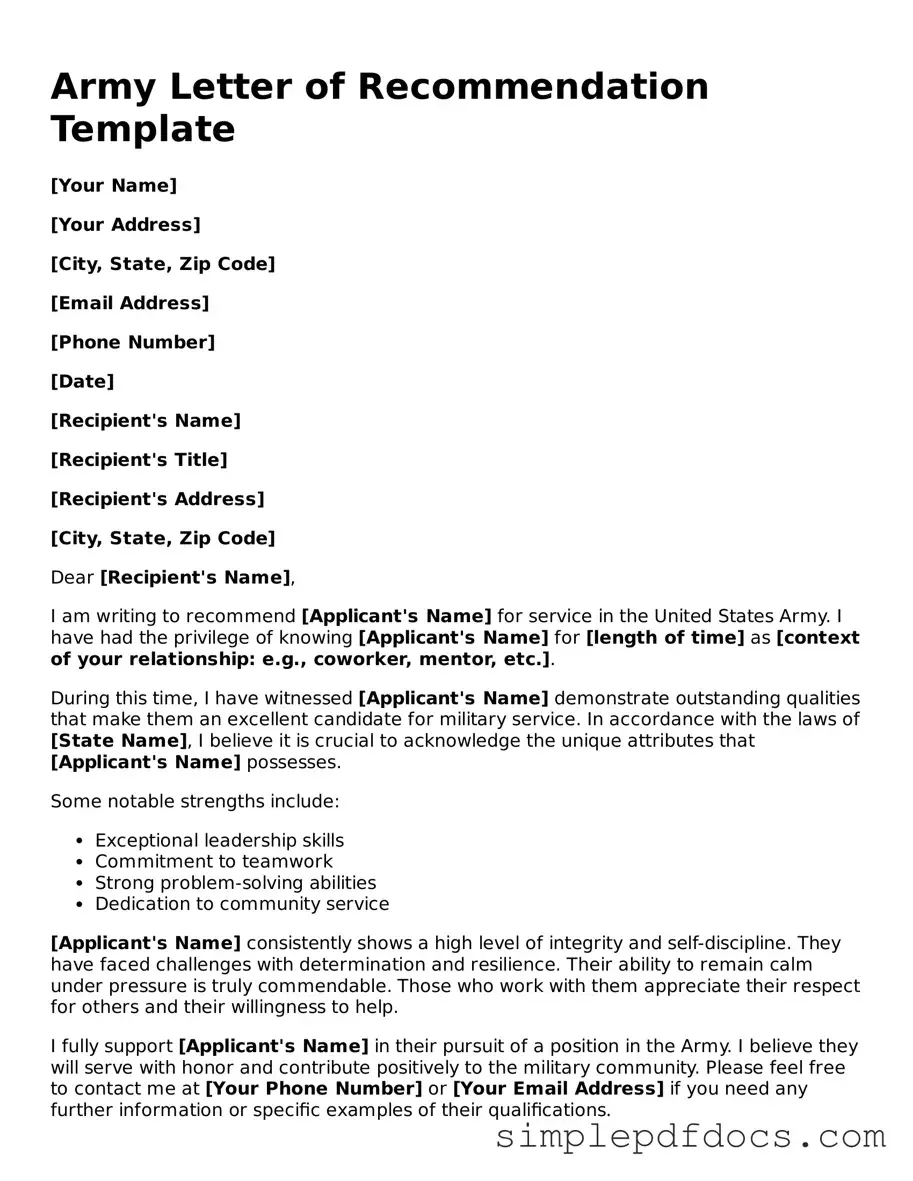Attorney-Approved Army Letter of Recommendation Form
The Army Letter of Recommendation form is a crucial document used to provide insights into an individual’s character, capabilities, and potential for success within the military. This form serves as a formal endorsement, typically written by someone who knows the candidate well, such as a supervisor or mentor. By highlighting specific achievements and qualities, the letter plays a significant role in various military applications and promotions.
Get Document Here
